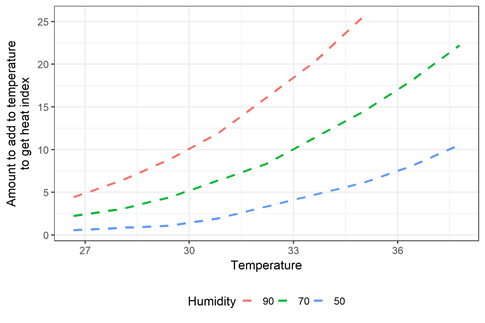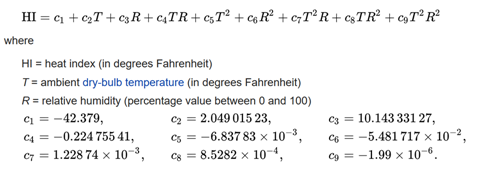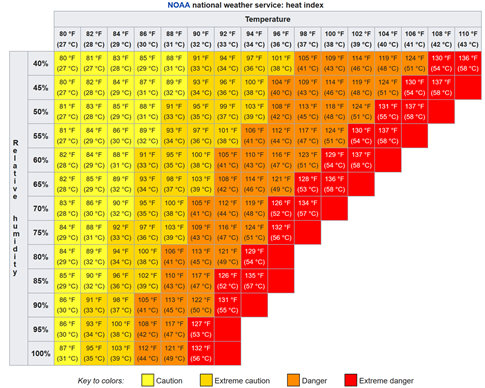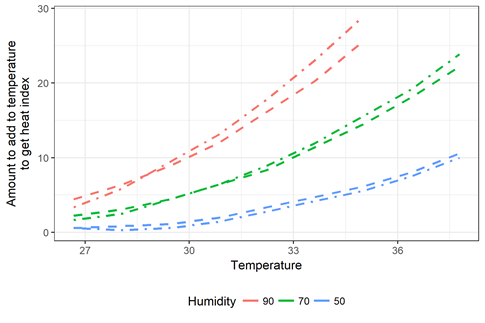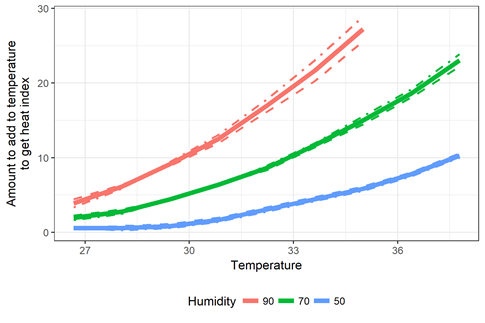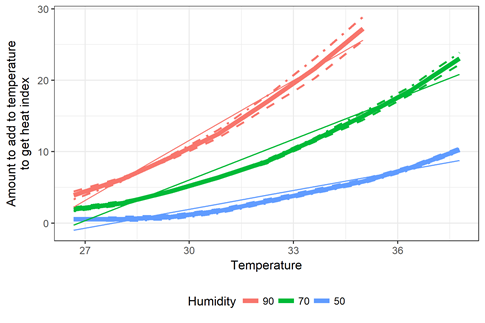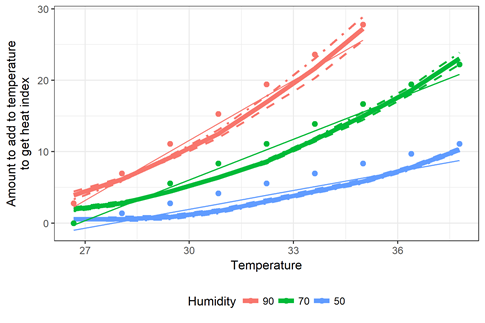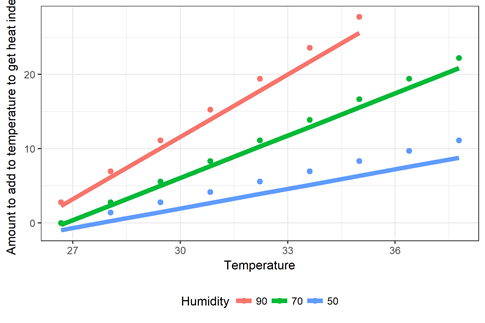It’s not the heat, it’s the heat index (Celsius edition)
 Subscribe to Decision Science News by Email (one email per week, easy unsubscribe)
Subscribe to Decision Science News by Email (one email per week, easy unsubscribe)
PERCEIVED TEMPERATURE (CELSIUS EDITION)
(If you would like to see the Fahrenheit version of this post, please go here.)
So, we were wondering, what’s this heat index we hear about? We went to the Wikipedia article on it. It is an index that combines air temperature and relative humidity to convert a (hot) temperature into something like perceived temperature, how hot it feels. It formalizes the adage “it’s not the heat, it’s the humidity.”
The equation to get heat index from temperature and relative humidity is big and it’s in Fahrenheit:
This heat index chart is also complicated and also in Fahrenheit, but it allows one to look up the heat index rather easily.
We wanted a better way to see what the heat index is doing. So we made this plot in Celsius:
When it’s 32 degrees C outside with 90% relative humidity, it feels 17 Celsius degrees hotter. That’s a lot of degrees.
It turns out there is another heat index formula. This one’s even more complicated and also in Fahrenheit.
We wanted to see how it compared to the first, so we plotted both together:
We like averaging, so we plotted the average of the two outputs:
We thought it looks not so far from linear so we fit a regression model to the average and plotted that:
Then we couldn’t resist coming up with a simple heuristic (shown in dots):
The heuristic comes pretty close to the regression model.
This heuristic is rounded from the Fahrenheit version, the accuracy of which was not bad. The error (mean absolute deviation) of the Fahrenheit heuristic to the average model was about 1.6 Celsius degrees. The error of the regression model to the average model was about .97 Celsius degrees, so it’s not bad, considering that the two different heat index formulae can differ by over 2.8 Celsius degrees.
So what’s the heuristic?
- Relative Humidity of 50%: Add 5 degrees for every 5 degrees above 27
- Relative Humidity of 70%: Add 10 degrees for every 5 degrees above 27
- Relative Humidity of 90%: Add 17 degrees for every 5 degrees above 27 + 3
It’s quite a bit simpler than the 9 and 16 term equations above and should be good enough for everyday use.
R CODE
For those who want it
